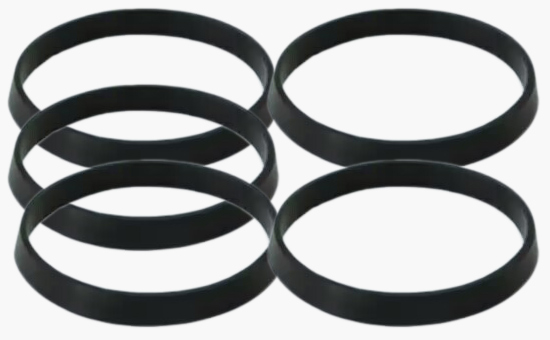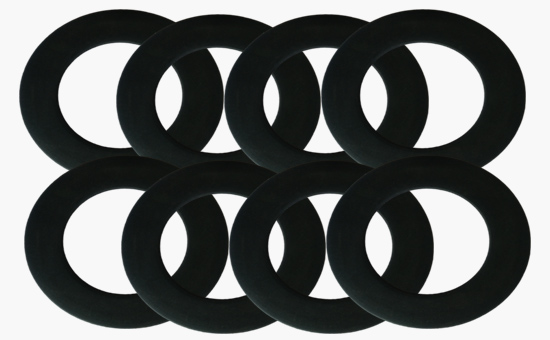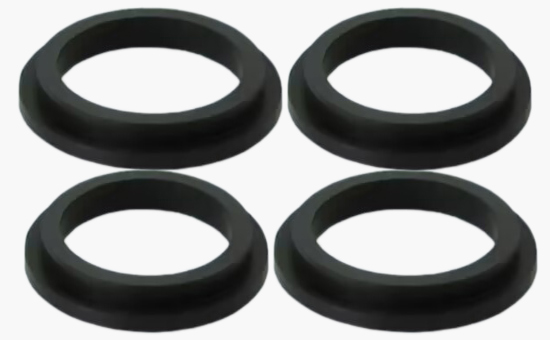
Rubber gaskets for drainage pipes are usually used at the joints of the pipeline system, and the main function is to ensure the tightness of the pipe connections and prevent water leakage and water seepage. This kind of rubber gasket is required to have good elasticity and sealing performance, can adapt to the slight deformation of the pipeline, ensure the tightness of the joint, and is commonly used in natural rubber, styrene-butadiene rubber, butadiene rubber, nitrile rubber and ethylene propylene rubber. Tire reclaimed rubber can be used in combination with natural rubber, styrene-butadiene rubber, etc. to prepare rubber gaskets for drainage pipes, which can effectively reduce the cost of rubber compounds.
1. Tire reclaimed rubber in the rubber gasket for drainage pipe mixing skills
(1) Performance requirements for rubber gaskets for drainage pipes
Rubber gaskets for drain pipes need to be frequently exposed to water and chemicals that may be contained, so the rubber compound is required to have good water and chemical resistance; Able to withstand a certain range of temperature changes, better adapt to changes in different seasons and environments; Rubber gaskets need to be exposed to moisture for a long time, which requires good anti-aging performance; It has good dimensional stability, and should maintain stable dimensions under different temperatures and pressures to ensure the sealing effect.

(2) Rubber gasket for drainage pipe mixed with tire reclaimed rubber formula design
Rubber materials suitable for drainage environments include natural rubber, styrene-butadiene rubber, butadiene rubber, nitrile rubber, EPDM rubber, etc., which have good water resistance and chemical resistance. Tire reclaimed rubber can be used as a partial option raw material to reduce costs while maintaining the necessary physical properties.
The vulcanization system of rubber gaskets for drain pipes containing tire reclaimed rubber can be selected as sulfur or peroxide vulcanization, and if necessary, both can be used to give the gasket ideal mechanical strength and good heat resistance. Appropriate use of carbon black such as carbon black N550 or N774 to improve the wear resistance and anti-aging performance of rubber 2SLYY1122; Properly fill clay, calcium carbonate, fine coal powder, etc., to further reduce costs. Antioxidants RD, MB, MBZ, etc. can be used to prepare gaskets for drainage pipes in tire reclaimed rubber to improve the heat aging resistance of the rubber. Choose softeners and plasticizers that are resistant to high temperatures, not easy to migrate or volatilize, improve the processing performance of the rubber compound, and avoid the degradation of performance at high temperatures.

2. Styrene-butadiene rubber/tire reclaimed rubber is used to produce gasket vulcanization formula for drainage pipes
150 parts of oil-filled styrene-butadiene carbon black masterbatch, 75 parts of tire reclaimed rubber, 5 parts of zinc oxide, 3 parts of stearic acid, 1 part of antioxidant RD, 1 part of paraffin, 1.5 parts of protective wax, 30 parts of carbon black N330, 130 parts of fine coal powder, 40 parts of naphthenic oil, 1 part of promoting M, 1.35 parts of accelerator PZ, 0.35 parts of sulfur; Total: 439.2. The vulcanization temperature is 160°C, and the vulcanization time is 10min.
In actual production, tire reclaimed rubber can also be used with natural rubber, butadiene rubber, etc. to prepare rubber gaskets for drainage pipes.
Exclusive original article [commercial authorization] reprint, excerpt and excerpt in any form are prohibited without written authorization. Focus on Hongyun rubber: learn the process formula and raw material technology of producing rubber products from recycled rubber to help you reduce costs and increase profits